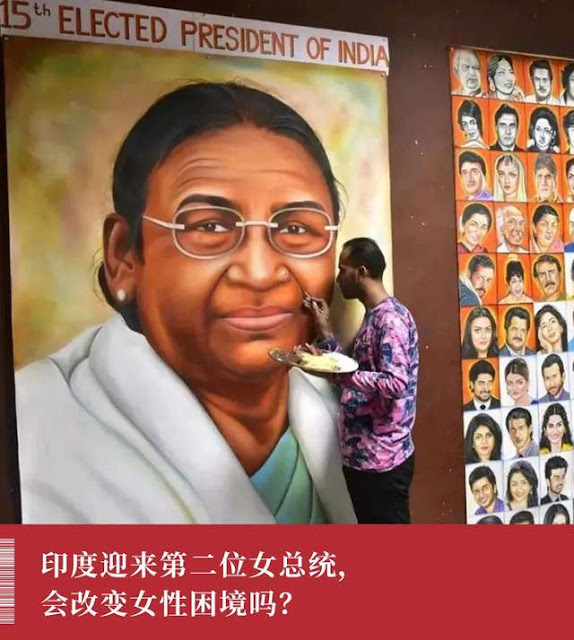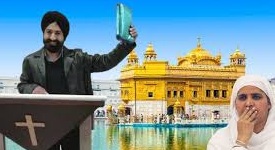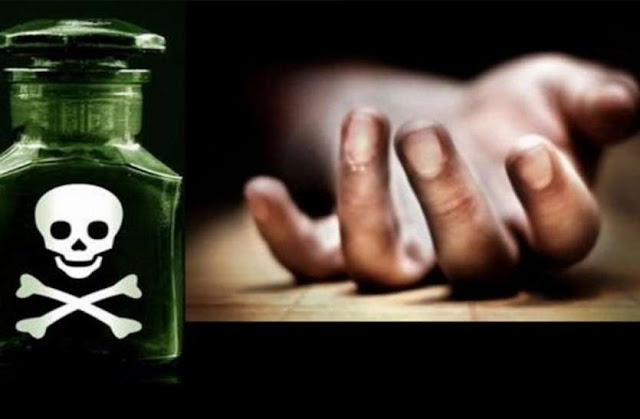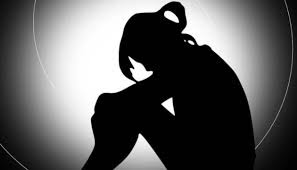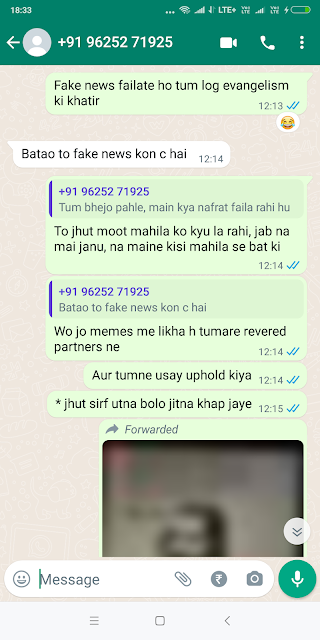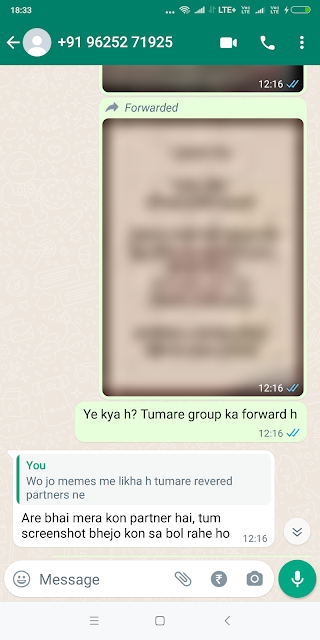Draupadi Murmu, the Fifteenth Indian President
Draupadi Murmu (Droupadi Murmu), female, was born on June 20,
1958 in a tribe in Odisha, eastern India. She joined the Bharatiya Janata Party
in 1997 and served as a parliamentarian and government minister of Odisha for
many years. From 2015 to 2021, he served as the Governor of Jharkhand State.
On July 21, 2022 local time, Murmu was elected as the 15th president
of India. At 10:15 a.m. local time on July 25, India, Murmu was sworn in as the
fifteenth president of India.
India holds a new round of presidential elections, Indian
media generally believe that Draupadi Murmu has an advantage
Mormu elected as India's new president
The new female president of India, Mormu, is a beautiful
teacher. The candles bid farewell to each other and shed tears until dawn
India ushered in the second female president. What is the
origin of Mormu, who was born in a tribe?
India voted for a new president, may usher in second female
president.
Murmu sworn in as India's president
India's new female president, even Modi nodded in
affirmation
What is the origin of Murmu?
From a low-caste untouchable (as left try to propagate) to a female president, India's
new iron lady Mormu.
Table of contents
1. Biography
2. Personal life
3. Social activities
Character Resume
On June 20, 1958, Murmu was born in the village of Baida Posi
in the Mayurbanji district of Odisha, belonging to the Santhal tribe, one of
the oldest and largest tribal groups in India. Become a teacher after
overcoming a difficult environment and completing their studies .
Murmu started his career as a clerk in the government of
Odisha.
From 1979 to 1983, Murmu worked as a junior assistant in the
Department of Irrigation and Energy. After quitting her job in Bhubaneswar and
returning to Leonpur, Odisha, at the insistence of her mother-in-law, to take
care of her family, she found a job as a teacher at Sri Aurobindo Integrated
School.
In 1997, Murmu was elected as an MP in Leonpur.
Elected to the State Assembly twice in Leonpur in 2000 and
2009.
From 2000 to 2004, he served as Minister in the State
Coalition Government led by Naveen Patnaik. Initially responsible for commerce
and transportation, later responsible for fisheries and animal resource
integration.
From 2006 to 2009, Murmu served as the chairman of the BJP's
"Recorded Tribes" state body.
In 2015, Murmu was appointed Jharkhand's first female
governor for a six-year term until July 2021.
On July 18, 2022, the 2022 Indian presidential election will
be held. Female tribal leader Murmu and senior politician Sinha will represent
the ruling and opposition camps respectively .
On July 21, 2022 local time, Murmu, a candidate elected by
the Indian Democratic League, defeated his opponent and was elected the 15th
president of India. She became the
second female president of India and the first president from a tribal area. At 10:15 a.m. on July 25, local time in India,
Murmu was sworn in as the fifteenth president of India.
Personal Life
Murmu's life took a tragic turn when she lost her eldest son
in 2009. A few years later, she lost her second son and her husband.
Social Activities
In September 2022, the Indian Ministry of Foreign Affairs
announced that Indian President Draupadimurmu will represent India at the
funeral of the late Queen Elizabeth II of the United Kingdom and express
condolences in the name of the government.
On July 25, India's newly elected President Drupadi Murmu was sworn in at the Parliament House in New
Delhi.
The inauguration ceremony was presided over by Chief Justice
Ramanna of India, and was attended by the Speakers of both houses of the
Federal Assembly, Prime Minister Narendra Modi, members of the Council of
Ministers, state governors and chief ministers.
On July 25, India's newly elected President Drupadi Murmu
(front) reviewed the honor guard of the three services at the Presidential
Palace in New Delhi.
In his inaugural speech, Murmu called on fellow citizens to
work together to make India a strong and self-reliant nation, and hoped that
women would contribute more to nation-building.
The results of the Indian presidential election were
announced on the 21st, and the candidate of the ruling National League for
Democracy, Murmu, won the election held on the 18th.
On July 25, India's newly elected President Drupadi Murmu
(front right) reviewed the honor guard of the three services at the
Presidential Palace in New Delhi.
Murmu was born in the tribal area of Odisha in June 1958.
He joined the Bharatiya Janata Party in 1997. He has served as a
parliamentarian and government minister in Odisha for many years, and served as
the governor of Jharkhand from 2015 to 2021.
The President of India is the head of state and the supreme
commander of the armed forces. He is elected by elected members of the federal
parliament and state legislatures for a five-year term.
Murmuu, 64, said after being sworn in parliament, "I
started my life journey in a small tribal village" "In terms of my background, even getting
a primary education seemed like a Dream."
"Despite the many obstacles, my determination has
remained firm and I became the first woman in my village to go to
university," she said.
Analysts say the election of Murmu is likely to help Modi
expand his roots in impoverished tribal areas ahead of Prime Minister Narendra Modi's 2024 re-election campaign.
"Her presidency is a historic moment for India,
especially for the poor, marginalized and oppressed," Modi tweeted after Murmuu's
remarks.
Murmuu said her election as president would give hope to
those who have been left behind by India's economic development in recent
years.
India's prime minister reportedly has executive powers, but
the president can dismiss some parliamentary bills for reconsideration, and the
president also plays a guiding role in forming the government.
Draupadi Murmu is India’s second female president. Everyone
is surprised by the achievements of this female politician, but few people know
about her tragic life experience.
When her political career was booming, she lost her father
and son. One of her two sons died tragically in a car accident, and the other
died inexplicably; her mother and brothers also died one after another.
Why did they die?
Who is this female politician?
Why was she able to defeat 15 male opponents as a woman in
the fierce competition?
And why can she create multiple records in Indian politics,
and what kind of political means does she possess?
Her name is Delaupadi Murmu, and once she is sworn in, the
formerly unknown woman will become India's second-ever female president.
The reason why she is being followed by so many people now is
because the woman who will be in charge of the entire Indian government agency
has no special political background, even came from a poor mountain village in
India, and is not a high caste.
But even so, she is still selected as the presidential
candidate of the National League for Democracy in the 2022 election. After
winning a majority of the vote, Murmu made history by becoming the first and
second woman to win a tribal chief.
And when she was sworn in, she was also the youngest
president to date and the first to be born after India's independence.
But compared with her present brilliant political
achievements, her background and experience are much more tragic.
Born in poverty, the political road is smooth sailing
Murmu was born in Odisha on June 20, 1958. This district is
one of the 30 districts of Odisha in India. It is the largest area in Odisha.
As of 2011, it also occupies the largest area in India. 10% of the population.
Although the population here is large, it is very poor. Even
now, many homes still burn charcoal, and they have to go to the wells at the
head of the village for drinking water. They live in old houses from decades
ago. It's hard to say.
Surprisingly, this area is a famous tourist destination and a
famous mining area, but most people can only rely on farming as their main economic
income.
The life of farmers there is completely invisible to the
shadow of today's society. There is basically no infrastructure. People still
follow the traditional farming and way of life. If natural and man-made
disasters are encountered, the life of farmers is even more difficult.
This can be seen from their literacy level. In the Indian
census, the average literacy rate of the locals is only 72%, while the female
literacy rate is even lower at 65%.
Because people there can't afford children to study at all,
and in India, there is a difference between men and women, and you can see it.
Compared with many local women, Murmu is undoubtedly lucky,
because she is fortunate to go to school and complete her education.
Murmu came from a local Santal tribe
The Santal is the largest tribe in the Indian state of
Jharkhand in terms of population, but is also present in other regions, notably
in Nepal and Bhutan.
And Murmu's grandfather and father were both elected decision
makers at the local RPI agency. The RPI is a committee of five local officials
and belongs to the village local self-government system of Indian villages as
distinct from cities and suburban municipalities.
Therefore, the elected decision-maker is equivalent to the
head of the autonomous township in China. It submits orders from government
officials and manages local village communities.
But the family of small officials in poor areas did not bring
much political help to Murmu, nor did they lead her to the path of politics.
After all, it is not easy for a woman to enter politics in India.
So after graduating from the arts major at Lamadeville
Women's College, Delaupadi Murmu became a teacher. She loved her industry so
much that she became an assistant professor at the Institute of Comprehensive
Education.
After a period of time, Drupadi Murmu entered the irrigation
department of the Odisha government and officially began her office and
political career.
During this time, for the first time in her life, she began
to understand the workings of government departments.
So in 1997, Drapadi Murmu joined the Bharatiya Janata Party
(BJP), and she was soon appointed as a BJP MP.
With his enormous effort and dedication, it took only three
years for Drupadi Murm to become the BJP chairman.
No one knows why a woman can be promoted so quickly in a
political party, it may have something to do with the BJP's proposition.
In any case, the tribal politician, Drapadi Murmu, is
starting to make his mark in Indian politics.
That is, in 2000, after she became the chairman of the BJP,
Murmu's career was even smoother.
From 6 March 2000 to 6 August 2002, she served in Odisha as
Minister of State for Commerce and Transport independently.
In addition, he also engaged in fishery and animal resource
development from August 2002 to May 2014.
These sectors, in India, are really one of the core sectors,
and the fact that a woman in Murmu can be as stable as a mountain in these
positions and still make a lot of difference is a clear indication of her
versatility and political ability in her political career.
Soon she was promoted to the national vice president of the
BJP.
During this period, Drapadi Murmu lived more and more well,
and got married and had children. It can be said that the career and family had
a good harvest, but the good luck was gone.
Whop were Father, son, mother and brother of Draupadi Murmu?
Her husband, Shyam Charan Murmu, was a banker. The conditions
are quite good, and the status and status of Murmu can be considered a match.
Soon after their marriage, the couple welcomed three
children, two sons and a daughter.
Such Murm became the "big winner in life" in the
eyes of ordinary people, but fate is always joking, just when everything seemed
to be fine, misfortune came.
The couple were happily married in 2010, but they lost a son,
and no one seems to know what happened at the time.
The couple was immersed in the loss of their son, but before
they could come out of their grief, three years later, in 2013, their other son
also died in a car accident.
The loss of two sons within three years of each other was a
devastating blow indeed for parents Delau Pardi and Shyam.
But fortune and misfortune do not come singly, and misfortune
does not come singly.
Things soon took a turn for the worse for Draupadi Murmu, whose
husband, Shyam Charan Murmu, died of cardiac arrest in 2014.
The death of her husband may have been caused by the deaths
of two sons, and now only Murmu is the only one supporting the whole family.
She had to carry all the grief of her life alone, and it was
a terrifying phase for the politician.
Only her daughter is with her now, as she lost her mother and
a brother between 2009 and 2015.
At that time, people only saw her political ascension, and
perhaps ignored the darkness in her life for more than ten years.
However, despite all the traumatic events, Draupardi managed
to pull herself together, continue her work in her life, and devote more of her
energies to politics.
On May 18, 2015, Drapadi Murmu became the governor of
Jharkhand and the first female governor of Jharkhand, a historic feat in her
life and in Indian politics .
Additionally, Draupardi is the first female tribal leader of
Odisha to be appointed governor of a state in India.
Because the BJP was in power for most of its six-year term as
governor in the Jharkhand government. The BJP was in power in the federal
government throughout her term.
In 2017 Drapadi Murmu was drawn into another major event, the
Pasargadi campaign against amendments to the Tribal Lands Act.
At the time, Indian authorities were planning to revise two
tenancy laws of 1908 and 1949, two original laws that guaranteed the rights of
tribal communities over their lands.
Under current law, land transactions can only be conducted
between tribes, while the new amendments give tribes rights to allow the
government to use tribal land for commercial purposes and lease tribal land.
Proposed bills to amend existing laws have been approved by
the Jharkhand Legislative Assembly, and the bills were sent for approval in
November 2016.
But with this modification, the government undoubtedly
touched the rights of the tribe, so the tribe people strongly opposed the
proposed law and began to hold protests against the proposed amendment to the
tenancy law.
In one incident, protests turned violent, with police
violently cracking down on the tribe, resulting in the death of a tribal man.
More than 200 people, including tribal rights activist Father Stan Swami, have
been charged with criminal charges.
Murmu has been criticized for being soft on police aggression
against the tribe during the campaign.
According to women's tribal rights activist Aloka Kujur, she
was expected to speak to the government in support of the tribes, but that
didn't happen, instead she called on the leaders of the Pasargadi movement to
give up their faith in the constitution.
In total, Murmu received 192 memoranda opposing the
amendments to the bill, when Opposition Leader Hemant Soren had said the BJP
government wanted to secure tribal lands through two amendments to benefit
businesses.
The opposition parties, Congress, etc. exerted enormous
pressure on the bill.
On May 24, 2017, Murmu backed down and refused to agree to
the bills, returning the bill to the state along with the memo she received,
which was later withdrawn in August 2017.
No one knows why Murm, who came from the tribe, did this, but
it can be seen that although she is a woman, she insists on her political
decision, and the tough method is evident.
Take part in elections and win in one fell swoop
In June 2022, the BJP nominated Murmu as the Indian
presidential candidate of the NLD for the 2022 general election the following
month.
During the campaign, Murmu visited multiple states to seek
support for her candidacy.
During this period, several opposition parties such as JMM,
BSP, Shiv Sena, etc. all announced their support for her candidacy before the
vote. This is unexpected.
Draupadi Murmu won Indian presidential elections with how
many votes?
And on July 21, 2022, Murmu won 676,803 electoral votes, or
64.03% of the total, in the 2022 presidential election.
That gave her a majority to become the 15th Indian president
in 21 of 28 states, including the federal possession of Pondicherry, beating
common opposition candidate Yashwant Sinha. She was sworn in by the Chief
Justice of India, Mr. NV Ramana, in the central hall of the Parliament.
It's unbelievable to see Drapadi Murmu on her way to becoming
the female president of India and the setbacks she has suffered in her life.
Draupadi Murmu Presided over Oath Ceremony of Chief justice
of India DY Chandrachud
Chandrachud sworn in as India's 50th chief justice. Supreme
Court justice Dhananjaya Y Chandrachud was sworn in as India's 50th justice
minister on Wednesday. President Murmu presided over the swearing-in ceremony
for him at Bhavan Square.
His illustrious father Y V Chandrachud was the longest
serving Chief Justice of India, serving as Chief Justice from 22 February 1978
to 11 July 1985.
Justice Chandrachud will serve as Chief Prosecutor for a
two-year term until November 10, 2024. Supreme Court justices retire at age 65.
His successor, Uday Umesh Lalit, recommended him as the
central successor on October 11. President Drapadi Murmu appointed him as the
next chief prosecutor on October 17.
Justice Chandrachud was born on November 11, 1959 and was
promoted to the Supreme Court on May 13, 2016.
He was a member of several constitutional judges and landmark
judgments of the Supreme Court, including on issues such as Ayodhya land
disputes, the right to privacy and adultery.
Justice Chandrachud was also one of the judges to make the
seminal judgment on the legalization of same-sex relationships after partially
overturning Section 377 of the IPC, the validity of the Aadhaar scheme and the
Sabarimala issue.
Recently, a court headed by him expanded the scope and
corresponding rules of the Medical Termination of Pregnancy Act (MTP) to
include unmarried women who are 20-24 weeks pregnant.
The court, led by Justice Chandrachard, also passed several
directives to ease the suffering people are facing during the COVID-19 crisis,
calling last year's brutal second wave of the pandemic a "national
crisis".
Most recently, he was one of two justices on the full Supreme
Court panel who objected to the use of a "circulatory process" for
the opinions of its members on Supreme Court appointments.
He was a judge of the Bombay High Court from March 29, 2000
until his appointment as Chief Justice of the Allahabad High Court on October
31, 2013.
Judge Chandrachud was appointed Senior Counsel by the Bombay
High Court in June 1998 and served as Solicitor General in the same year until
his appointment as Judge.
After earning a BA (Hons) in Economics from St. Stephen's
College, New Delhi, Judge Chandrachud received his LL.B. from the University of
Delhi Campus Law Center and his LL.M. and J.D. from Harvard Law School, USA.
He has practiced as a solicitor in the Supreme Court and the
Bombay High Court and is a Visiting Professor of Comparative Constitutional Law
at the University of Bombay.
On July 21, local time, Murmu, the candidate selected by the
Indian ruling coalition, won the 15th presidential election and was elected as
the new president of India. On the 25th, she was sworn in.
From a tribal girl to a female president, Murmu's
"turning over" experience seems to have given hope to some Indian
indigenous residents and some female groups who are socially and economically
disadvantaged.
But analysts believe that the symbolic significance of
Murmu's presidency to the national unity is more obvious. India's chronic
diseases such as the strict social hierarchy and the low status of women are
still difficult to be cured in the short term.
Did Draupadi Murmu swore in as India's second female
president?
On the 25th, India's newly elected President Murmu was sworn
in at the Parliament Building.
The inauguration ceremony was presided over by Chief Justice
Ramana of India, and was attended by the Speakers of both houses of the Federal
Assembly, Prime Minister Narendra Modi, members of the Council of Ministers,
state governors and chief ministers.
In his inaugural speech, Murmu called on fellow citizens to
work together to make India a strong and self-reliant nation, and hoped that
women would contribute more to nation-building.
"Murmu devoted her life to serving the society and
empowering the poor, oppressed and marginalized. Her understanding and
compassion for policies will greatly benefit India." After being elected
president, Indian Prime Minister Narendra Modi told Moore Mu gave a high
evaluation.
Was The "Politically Correct" Presidential Candidate?
India's first tribal-born president, India's youngest
president, India's second female president, Murmu, 64, is headed for the
presidency with multiple records.
When was Draupadi Murmu born?
Draupadi Murmu was born in 1958 in the Santhal tribe in the
state of Odisha, India. This tribe is one of the oldest and largest tribal
groups in India. The tribal people generally have a low standard of living and
lack of knowledge and skills. But because Murmu was born into the family of a
tribal chief, he had the opportunity to receive a modern education.
Was Draupadi Murmu was originally a school teacher?
In 1997, she joined the Bharatiya Janata Party and officially
joined the political arena. Since then, she has held public office many times
in the government department and became the first female governor of Jharkhand
in 2015.
During his tenure as governor, Murmu opened the governor's
office to people from all communities and all walks of life, providing ordinary
people with effective channels for complaints or suggestions. At the same time,
she is also very concerned about social issues such as unfair treatment of
Indian women and unfair laws in tribal communities.
Due to her sympathy for the people, Murmu has accumulated a
good reputation over the years: the people of Odisha affectionately called her "the
daughter of the earth". Jagat Prakash Nada, the chairman of the BJP,
described her as a "A breath of fresh air in Indian politics".
According to some experts, deputy director of the Center for
South Asian Studies at Fudan University, meeting the criteria of
"political correctness" in India, a diverse country, is a major
advantage of becoming the president of India.
"Murmu, who was born in a tribe and is a woman, is just
a female politician who conforms to 'political correctness' and has little
controversial political experience." Some experts said, "At the same
time, due to changes in family life, Murmu and others.
In 2008, she gradually
established a political image of being devoted to politics for life,
eradicating corruption, and serving the people wholeheartedly. This is quite
similar to the current Indian Prime Minister Narendra Modi.”
Limited impact on Indian politics
For a long time, people can always see the busy figure of the
Indian Prime Minister in domestic and foreign affairs. What role does the
President of India play?
The Indian constitution stipulates that the term of the
president is every five years. He is the nominal head of state of India, but
does not enjoy real power. State power is controlled by the government cabinet
composed of the majority party in the parliament.
Although Indian laws have given the president certain powers,
judging from the actual operation of power, for a long time, the Indian
president has often acted in vain.
However, he also said that the Indian president is not just a
hypothetical head of state, and he usually plays a key role in political
crises. When India is threatened by war, external aggression or internal armed
riots, the President has the power to declare a state of emergency. If the
government is paralyzed, the president can perform the functions of head of
government. In addition, the president also has the power to veto bills
proposed by the government, or to appoint political parties to form a cabinet
in the event of a stalemate in the general election.
"Now, the president and the prime minister of India
belong to the same political party, and there is no situation where the
president and the prime minister belong to different parties and the balance of
power occurs." Lin Minwang believes that the symbolic significance of the
current Indian president is greater. and the government cabinet may have
limited influence.
Murmu once said: "I come from a society that views women
very harshly, and they question any woman who steps out of the house."
Some Indians believe that Murmu's election is a historic
moment in India's 75-year long history of independence. However, whether the
symbolic identity of the president will bring about substantial changes in the
lives of women and indigenous people in India, at present, may still be a
question mark.
Bookmark and SHARE this page in Public Interest>>


